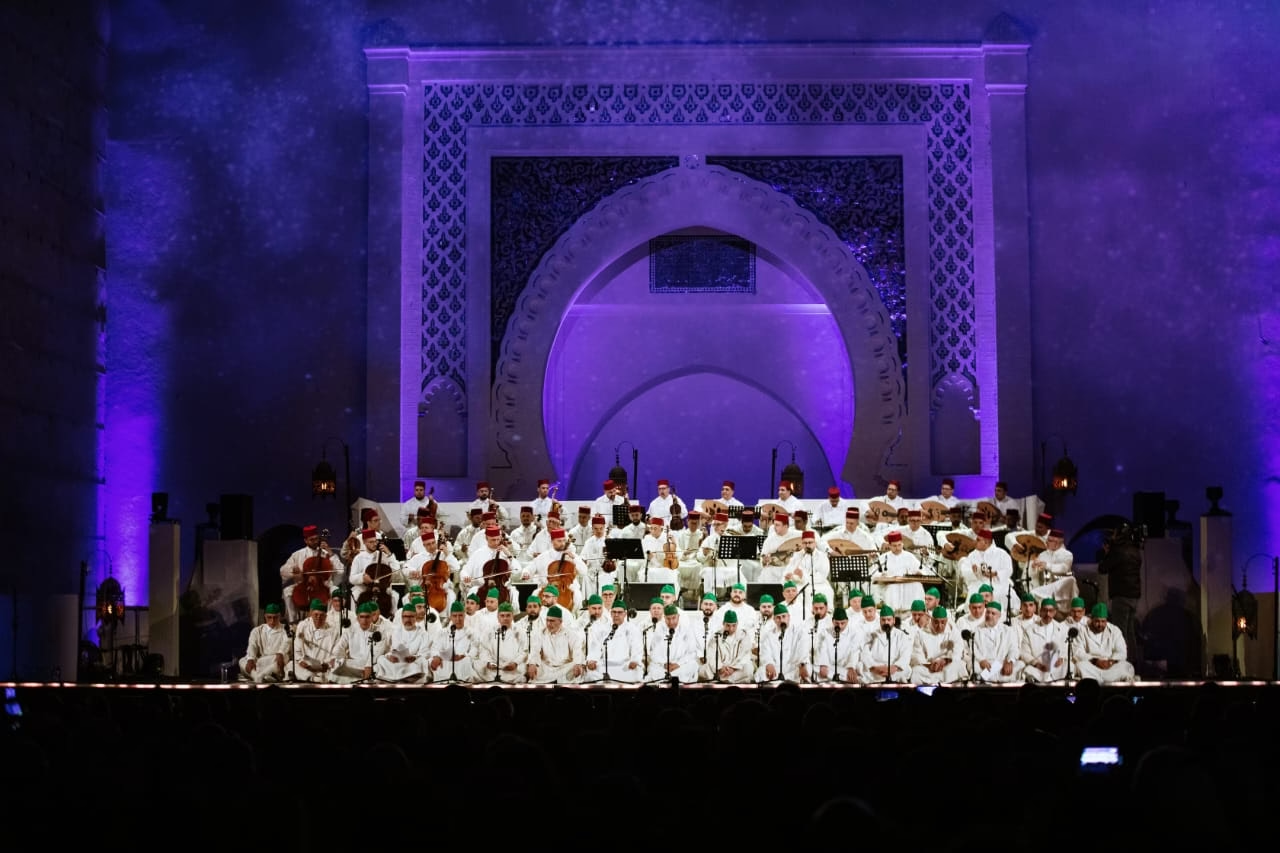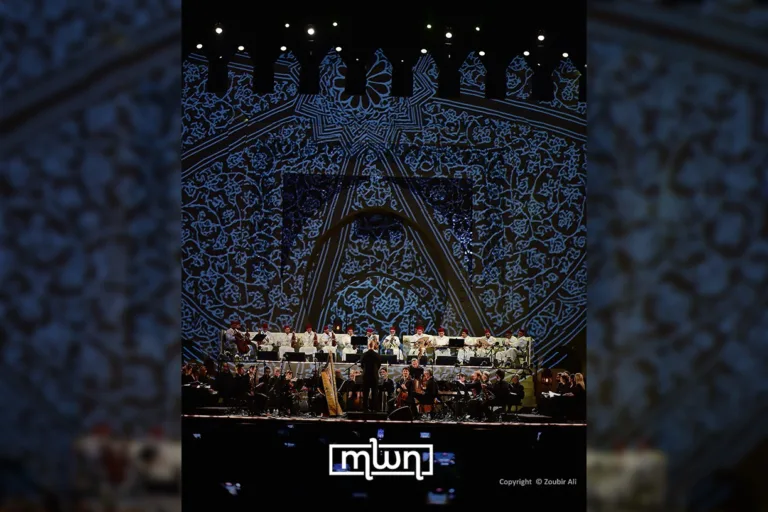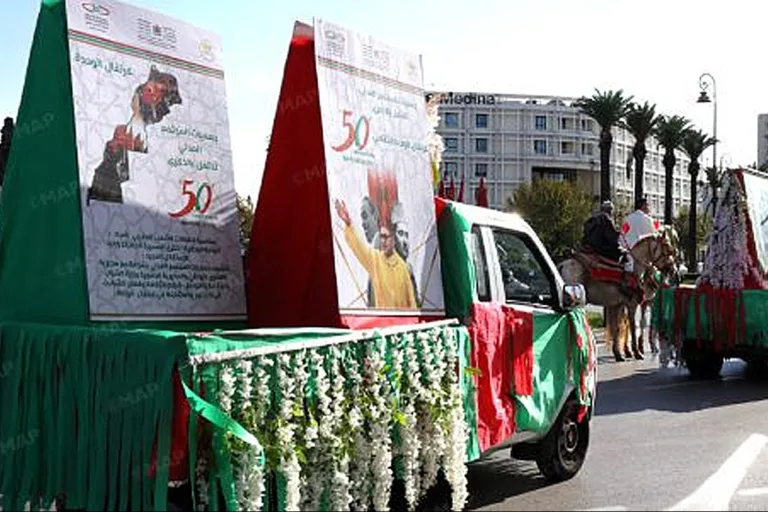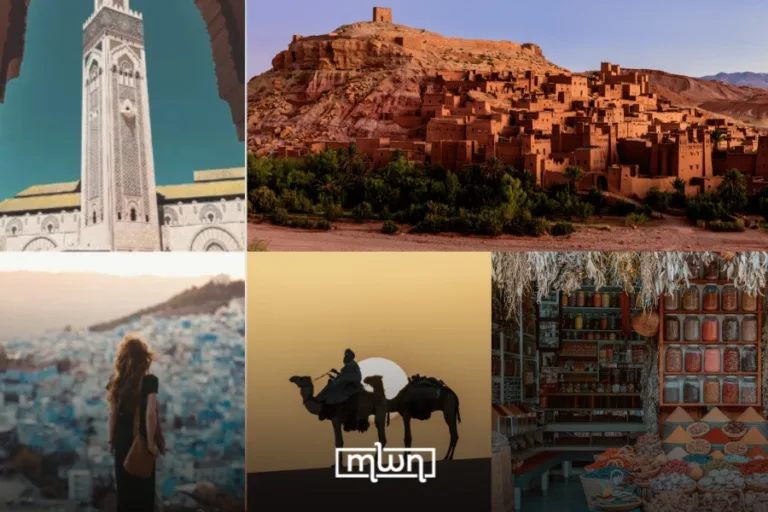Fez’ turned 44 on UNESCO’s list as a World Heritage Site, and its music still sings like it’s just the beginning.
Fez – At Bab Al Makina, where the walls remember more than we ever could, a Madih group from Fez took the stage on a warm May night, not just to perform, but to mark a milestone: 44 years since Fez was named a UNESCO World Heritage Site.
Led by Mohamed Bennis, head of the Imam Al-Busiri Association, “Ahl Fez” delivered a performance steeped in spiritual tradition.
“It’s an honor to be here,” he told Morocco World News (MWN) in an exclusive interview. “This is a place where different forms of Madih, Samaa, and Andalusian praise meet in harmony. We hope the people of Fez feel proud of what we’re sharing.”
The crowd certainly did. Their set, built on devotional poetry and flowing melodic lines, carried the unmistakable calm of music rooted in ritual and the spiritual.
But there was nothing dull about it, the rhythms pulsed, the harmonies shimmered, and voices soared with intent. It was spiritual, yes, but also confidently alive.
To understand what made this performance special, it helps to know the music’s backstory.
Andalusian music, known locally as “Al-Ala” (the instrument) has been part of Moroccan cultural life for centuries, and Fez is one of its most important homes.
The origins go back to the 9th century, when the musician Ziryab left Baghdad and eventually landed in Córdoba.
His technical brilliance and refined taste turned him into a tastemaker in Al-Andalus. He didn’t just teach music; he changed how people ate, dressed, and thought about art.
Andalusian music evolved around poetic forms like “muwashah” (a strophic Arabic poetic form that developed in al-Andalus) and “zajal” (a traditional form of oral strophic poetry), both designed to move beyond rigid Arabic classical structures.
These forms gave the music a new freedom without losing its discipline.
After the fall of Granada in 1492 and the later expulsion of the Moriscos in the early 1600s, thousands of Andalusians fled to North Africa.
Morocco, and Fez in particular, became their sanctuary. What had been court music in Iberia found new life in homes, religious orders, and cultural associations across the Maghreb.
“Ahl Fes” belong to that musical continuum. Their work reflects deep respect for tradition, yet it never feels frozen in time or too archaic for modern palates.
Their performance was a living extension of a centuries-old tradition, still intimately tied to the soul of the community.
Instruments like the oud and the rebab, both central to this tradition, echoed across Bab Al Makina with clarity and warmth.
The group’s pacing followed the structure of the “nuba”, a carefully organized suite of instrumental and vocal pieces, but never felt rigid.
The improvisational spirit, bound by tradition, gave the music room to breathe.
Celebrating Fez’s UNESCO anniversary with this kind of concert felt exactly right. Heritage, after all, isn’t only about fixating on the past, but also in reinventing it.
It’s about recognizing how the past still moves through us, sometimes through a voice raised in praise, or the trembling of a bow’s ancient strings.
What “Ahl Fes” offered last night wasn’t a lesson in history, but something closer to an invitation to listen, to remember, and to keep the music going.
















